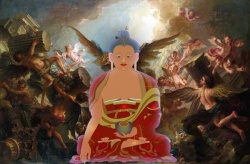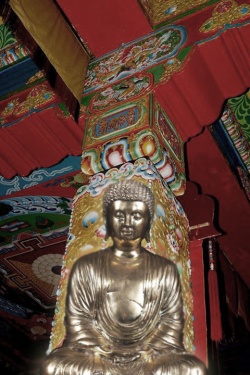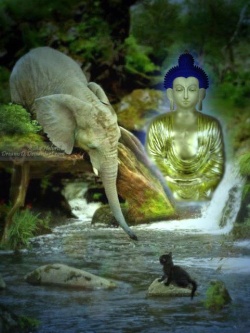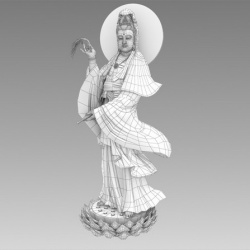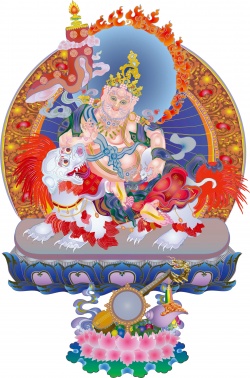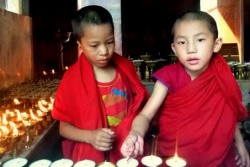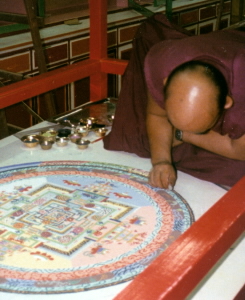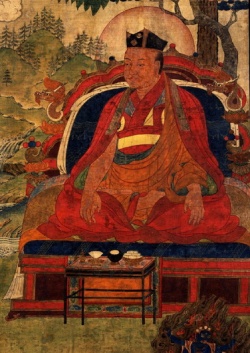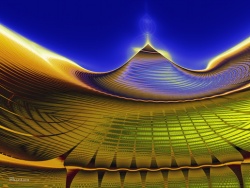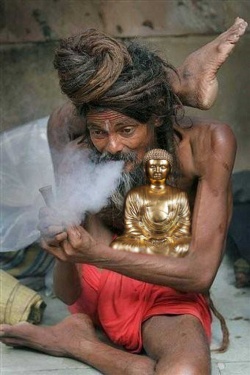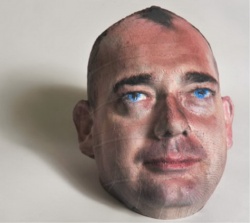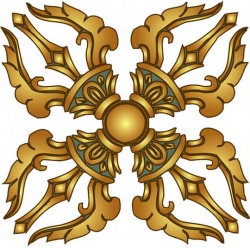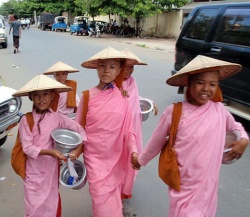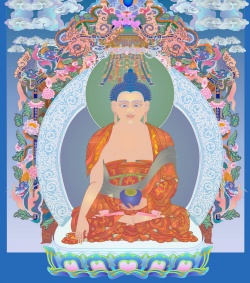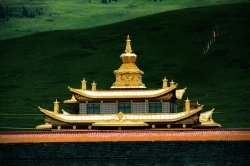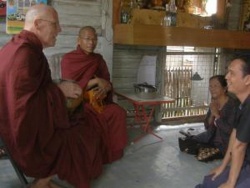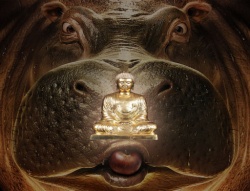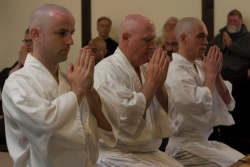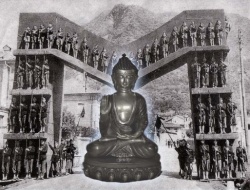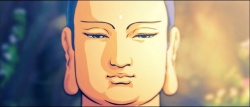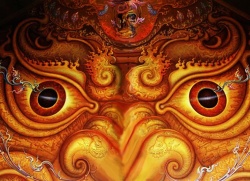Gilgit Manuscripts
Published by the gracious permission of His Highness Shri Rajarajeshwar Maharajadhiraj Maharaja Shri Harisinghji Bahadur, G.C.S.I., G.C.I E ,
K.C.V.O., L.L.D , of Jammu and [[]], from the original manuscripts recently unearthed near Gilgit within His Highness' territories.
Vol. Ill
PART 2
EDITED BY DR. NALINAKSHA Durr, PH.D. (CAL.), D.LITT. (LoND.). with the assistance of VlDYAVARIDHI SHIV NATH SHARMA
PRINTED AND PUBLISHED BY MR, ). C, SARKHEL, AT THE CALCUTTA ORIENTAL PRESS, LTD, 9, PANCHANAN GHOSE LANE, CALCUTTA,
INTRODUCTION
The discovery of the mansucnpt of the Vinaya-vastu of the Mulasarvastivada Vmaya Pitaka was announced, by Prof. Sylvaln Levi in the Journal Asiatiqtte, vol. ccxx (1932) and by myself in the Indian Historical Quarterly, vol. xiv (1938).
The ms. is written on birchbark in Gupta characters of the sixth century A.D. and is of the same type as are most of the mss. discovered by Sir Aurel Stein and other explorers in Eastern Turkestan and Central Asia. 1 The leaves of the ms. are very large m size being about 23/4" long and 5" broad as will be apparent from the enclosed plate.
There are ten lines in each page. The ms. reached our hands with several gaps. The leaves were in a confused state. These have been arranged partly by the available leaf marks and partly with the help of the Tibetan version. The work is an extensive one, covering 423 leaves (vide reproduction of the last leaf in the plate). Each leaf covers about 4 pages in print (as in the present edition), and so if all the leaves could be found, the work would have covered about 1700 pages in print. In Tibetan, this work extends over four volumes covering (407 + 563 + 478 + 470 = ) 1918 leaves.
The chapters and numbers of leaves that have come to our hands are as follows:
(i) Pravrajya-vastu (in fragments) 2-3 = 2 leaves
Do ( = Samgharaksitavadana) 2 49 - 53 = 4/^
(ii) Posadha-vastu (in fragments) 53~6o = 7/4 ,,
1 See my Intro, to the Gdgit Mss., vol. I.
2 The leaves were in the possession of Prof. Sylvain Levi and published in the Journal Asiatique, 1932.
(iii) Pravarana-vastu (do) 7 I "73 = 3 leaves
(iv) Varsa-vastu (do) 75'^ = ^
(v) Carma-vastu (including 5ronakoti-karnavadana) 80-91 = 12 ,,
(vi) Bhaisajya-vastu (in fragments) 9 I- 93 == 3
Do (traced in Divyavadana corresponding to the lost leaves 126-128)
Do 129-139 = io^4
(vii) Clvara-vastu (complete) 139-175 = 36/4 ,,
(viii) Kathina-vastu (do) 175-180 = 5/4 ,,
(ix) Kosambaka-vastu (do) 180-185 ==
(x) Karma-vastu (do) 185-188 =
(xi) Pandulohitaka-vastu (do) 188-202 = 14^/2 ,,
(xii) Pudgala-vastu (do) 202-209 = 7/^ >
(xiii) Parivasika-vastu (do) 209-211 = 2^4 ,,
(xiv) Posadhasthapana-vastu (do) 211-214 = 3^2 ,,
(xv) Other unidentified vast us fin fragments), the last of which is Samghabhedaka-vastu
The above calculation shows that our ms. represents a little more than a half of the original, and I believe the rest passed into other hands. 1
Our Scheme of Publication
In view of the incompleteness of most of the chapters (vast us) we propose to publish first only the complete vastus and then take up the rest. As estimated above, the leaves in our hands will cover about noo pages in print, i.e., about 4 volumes of 275 pages each. The first six vastus we propose to include in the forthcoming volume (GILGIT MANUSCRIPTS, vol. Ill, pt. i). 2 The present text contains four vastus (vii-x) and is marked vol. Ill, pt. 2. The remainder of the mss. will be published in two other parts.
The ms. is well-written though there are several mistakes of the scribe. In settling the reading of the text, we have relied mainly on the Tibetan translation (Dulva, vol. Ill, leaves 78-229) which is not only accurate but literal. There are a few oft- quoted stereotyped passages common to this text as also to the Divyavadana and the Avadanasataka. These have been compared and corrected as far as possible. For the ecclesiastical terms and laws the Mahavyutpatti and the Mabavagga in Pali have been of much help.
1 In the Mahavyutpatti, 276, names of the following vattus appear:
(i) Pravrajya-vastu (x) Pratikriya-vastu
(ii) Posadha-vastu (xi) Kalakalasampada-vastu
(iii) Varsa-vastu (xii) Bhumyantarasthacarana-vastu
(iv) Pravarana-vastu (xiii) Parikarmana-vastu
(v) Kathina-vastu (xiv) Karmabheda-vastu
(vi) Qvara-vastu (xv) Cakrabheda-vastu
(vii) Carma-vastu (xvii) Adhikarana-vastti
(viii) Bhaisajya-vastu (xyii) Sayanasana-vastu (ix) Karma-vastu
2 This is being edited by Dr. P. C. Bagchi, Dr. es. Lettres (Paris),
Language and Style
The language of the text is the usual Buddhist-Sanskrit which does not always conform to the canons of Panini. In this text, Prakritism is more in evidence in the language than in other Buddhist Sanskrit texts and particularly in those places where the topic is purely ecclesiastical. There are several instances which dis- tinctly prove that the compiler worked on a Prakrit original and found difficulty in [[Sanskritising the Prakrit words. 1 The Sanskritisation as well as Paliisation of a verse in p. 183 (see fn. 7) leaves no room for doubt that both the compilers worked an old Prakrit text and anyhow rendered the verse into Sanskrit and Pali.
In this text as in the Divyavadana and the Avadanasalaka, there are mechanical repetitions of certain passages.
This has been already pointed out by Dr. Speyer in his introduction to the Avaclana-sataka (pt. ii, p. xvi-xvii).
Some of these passages in the present text are as follows : In the Kathinavasttt and Karmavastu, which deal exclusively with ecclesiastical matters, there are the usual mechanical repetitions in the characteristic forms of Vinaya texts, e.g., the words of proclamation for an ecclesiastical act, the enumeration and definition of Vinaya terms. In the Kosambakavastu, there are also similar mechanical repetitions.
The verses appear mostly in nfajati metre, and a few in anustuf. Several verses have been borrowed from the Dbamma-pada, Udana and Sutta-nipata.
In every chapter, the compiler has tried to give a synopsis (tiddana) of the contents for mnemonic purposes either in prose or verse as he found convenient. In one or two cases (e.g , pp. 108, 173), the uddana does not fully represent the contents. This was probably due to the changes that the text underwent in the course of revision. In the Pali Vinaya too this uddana is a characteristic feature, but in it the uddana appears in a more elaborate form and at the end of a chapter.
There are several stories, some of which are interesting. These are written in a lucid language but savour more of a book of fables than of a religious text. Particularly interesting are the account of the life and customs of the Licchavis (pp. 6 ff.), the stories of the diseases cured by Jivaka, the problems solved by Visakha, and the incidents relating to sinister moves of the Sadvargika monks.
Correspondence between the present text and the Pali Vinaya
Apart from the narratives, the correspondence of the present text with the Pali is fairly close, and the contents clearly suggest that both are derived from a common source. In the arrangement of chapters, the difference will be apparent from the following table :
Present Text Pali Vinaya (Mahavagga) ch. vii
From the Chinese versions 1 as also from the list of vastus in the Mahavyutfatti* it seems that each vastu was studied separately, and there was no particular sequence of one vastu to another.
In the Civaravastu, there are the biographies of Bimbisara, Abhaya, Jivaka, Visakha and Amrapali. In these biographies the two traditions preserved in Sanskrit and Pali show certain differences in details. The directions relating to making of civara (p. 50-51), washing of clothes (p. 88-85), using bed-covers, and bandages for itches (p. 90), nature of materials suitable for a monk's dress (p. 91-92), the occasions for laying aside the civara (p. 96-97) are similar to those in Pali. Many of the verses in this chapter have their parallels in the Pali Dhammapada.
In the Kathinavastu, the agreement between Pali and the present text is much closer. It opens in the both (Vinaya, I, p. 253 and present text, p. 151) with the story of the Saketan monks corning to meet Buddha immediately after the rains. Buddha realises their difficulties about clothes and permits householders to offer cloths en masse to the Saiigha. He then prescribes that the Sangha should accept the gifts, entrust certain monks to make them up into proper civaras, and then distribute those among the resi- dent and incoming monks. The formalities, with which this act of making and distributing robes is performed, agree almost verbatim
1 The following parts of the Mulasarvastivada-vinaya were translated by I-tsing (see Takakusu's Intro., p. xxxvii):
(i) Pravrajya (upasampada)-vastu=Taisho, vol. xxiii, 1444
(ii) Varsavasa-vasm=/l?zW., > 1445 (iii) Pravarana-vastu ~lbid. 3 1446 (iv) Carma-vastu ==//., 1447
(v) Bhaisajya-vastu =Taisho, xxiv, 1448 (vi) Kathina-clvaravastu Ibid., 1449 (vii) $amghabhedaka-vasm==/W 1450 (viii) Vinayaksudraka-vastu=/feW., 1451.
2 See above, p. iii.
with those in the Pall text. There are certain minor differences but the technical terms for cloths and the ecclesiastical acts are not only identical (p. 159) but appear as if these were originally neither Sanskrit nor Pali but were in some form of Prakrit, from which the words have either been Sanskritized or Pali-ised by a certain amount of etymological and grammatical straining.
The Kosambaka-vastu is substantially the same as that in Pali, the only difference is that the Sanskrit text is more elaborate in its account though it passes over the story of the elephant serving Buddha during the period of his retirement. The verbatim agreement between the two versions of the versified portions is striking and calls for further study.
The Karma-vastu also has a very close affinity with the account in the Pali text with slight difference in details, e.g., the ecclesiastical acts performed in concord (samagra = T?Hli samagga) and dis- cord (vyagra = Pali vagga), the number of monks capable of performing certain ecclesiastical acts, illegality of prescription of unsuit- able punishment for an offence, and method of recalling (psarana) monks into the Sangha after the probationary period.
Thus, we see that as far as ecclesiastical matters are concerned the two versions agree quite closely. These differ only in details and in certain narrative portions. There are a few stories like that of Mrgasiras (p. 79), of Upananda (pp. 99 f., 117 .), of Dhrta-iistra-hamsaraja, which have no counterpart in the Pali Vinaya but may be traced in the Jatakas and the Dbammafadatthakatha and such other commentarial texts.
From the above comparison, we may conclude that both the versions might have a compiled Vinaya text before them but the compilers incorporated the stories from the floating tradition as they deemed fit.
The Tibetan translation of the present text was made by Sarvajnadeva and Dharmakara of Kashmir with the assistance of Vidyakaraprabha of a country in Central India and a Tibetan Lotsava in the 9th century A.D. As we have already stated above (p. ni) it is a verbatim translation of the present text.
In the Tibetan collection, there is only one Vinaya text (Dulva). In Chinese, however, there arc several translations of the Vinaya texts. Of the eighteen schools of Buddhism that appeared in the pre-Asokan days, five at least had their own Vinaya texts. These were all translated into Chinese. The present text (i.e. Mulasarvastivada-vinaya) was studied and translated by the last Chinese pilgrim I-tsing. 1 This translation follows the present text closely but is not of much use for settling the reading.
Unlike the Tibetans, the Chinese took keen interest in the study of the Vinaya texts. Both Fa-hien 2 and I-tsing" came to India with the sole purpose of finding out correct texts of the Vinaya rules in India and to take them back to their homeland.
Regarding the Vinaya texts, Fa-hein writes that in the north he found only "one master transmitting (the rules) to another but there were no written copies. At Pataliputra, in a Mahayina monastery, he found a copy of the Mabasangbika Vinaya 3 of which the original was in the Jetavana-vihara. There were eighteen schools of Buddhism, and each one had its own views about the disciplinary matters, but they agreed in general meaning and had small and trivial differences. Fa-hien liked this copy as it was the most complete with the fullest explanations", 1 and he afterwards translated it into Chinese (See Nanjio 1119 and 1150). He further writes that he got a transcript of the rules in six or seven thousand gathas, being the Sarvastivada rules, observed by the monks in Ts'in.
i See infra, p. ix.
- Legge's Fa-hien, p. 2 , g- IO: He undertook his journey to India in search of complete copies of the Vinaya Pitaka.
3 Ding's records speak only of the disciplinary life of the Buddhist monks.
Fa-hien visited India in the first decade of the fifth century and at that time he came across a Sarvastivada Vinaya in verses and a complete copy of the Mahasahghika Vinaya with exposition. From the Mahavastu, the first volume of the Vinaya of the Mahsanghikas, it is apparent that Fa-hien's statement regarding the Mahasahghika Vinaya was based on facts. It is likely therefore that his other statement, viz., the existence of the Sarvastivada Vinaya in verses seems to be trustworthy. This text probably served as a basis for the developed Mulasarvastivada Vinaya of which the present text forms a part. The Vinaya in verses, it seems, was not translated into Chinese. The Dasadbyaya, the Vinaya text recog- nised by the early Sarvastivadins, was in prose as is proved by its Chinese translation.
I-tsing, who visited India three centuries later, became as much interested in the Mulasarvastivada Vinaya as was Fa-hien in the Vinaya of the Mahasahghikas. The former found the Mulasarvastivada Vinaya more comprehensive and replete with expositions and made its study the main object of his mission to India. He confined his attention to the disciplinary life of the monks, and for this he had to digress into an account of the Buddhist schools and their spheres of influence.
He has no doubt given us his own impressions about the monastic life but there are distinct evidences to ptove that he was conversant with every section and chapter of the Mulasarvastivada i Legge, Fa-hien, ch. xxxvi.
Vinaya. There is one chapter at least in his account which shows that at times he even reproduced literally the contents of the Vinaya. For the convenience of readers, one chapter (pp. 190-192) is quoted here for comparison with the original Sanskrit text (see pp. 141-144). I-tsing writes: >
"Lands, houses, shops, bed-gear, woollen seats, and iron or copper
implements are not distributable Wooden and bamboo implements,
leather bedding, shaving things, male and female servants; liquor, food, corn; lands and houses, are all to be made the property of the priests
assembling from every quarter "
"Long rods are to be used as banner-staff before the Jambunada-varna image of the Buddha. Slender ones are to be given to the bhiksus to be used as metal staffs (kbakkbdra)." 1
"Quadrupeds, elephants, horses, mules, asses for riding are to be offered to the Royal Household. Bulls and sheep should not be distributed, but belong to the whole assembly. Such goods as helmets, coats of arms, etc. are also to be sent to the Royal Household. Miscellaneous weapons, after having been made into needles, gimlets, knives or heads for metal staffs, are distributed among the priests then assembled..."
" Palnts f gd quality, such as yellow, vermillion, azure, blue, green, are sent to the temple to be used for colouring images and ornaments around."
"White and red earth and inferior blue substances are distributed to the assembled priests. The wine if it is nearly sour is to be buried m the ground, and when it has turned into vinegar the priests may use it. But if it remains sweet it must be thrown away, but it must not be sold, for the Buddha has said: Te bhiksus, who have been ordained by me, must not give wine to others, nor take it yourselves. Do not put wine into your mouths, even so little as a drop fallen from the point of a reed'. If one eat corn-flour mixed with wine, or soup made from the dregs of wine, one is guilty " to be supplied to sick persons when needed. Precious stones, gems and the like are divided into two portions, one being devoted to pious objects (dharmika), the other to the priests' own use (sangfrtka). The former portion is spent on copying the scriptures, and in building or decorating the 'Lion-seat'. The other portion is distributed to the priests who are present..."
"Medical substances are to be kept in a consecrated (lit. pure) store, I For the interesting note on Khakkhara see I-tsing, p. , 9I .
" the scriptures and their commentaries should not be parted with, but to be kept in a library to be read by the members of the Order. Non-Buddhistic books are to be sold and (the money acquired) should be distributed among the priests then resident. If deeds and contracts are payable at once, (the money is) to be realised and to be immediately distributed; if they are not payable at once the deeds should be kept in the treasury and when they fall due, (the money) should be devoted to the use of the Assembly. Gold, silver, wrought or unwrought goods, shells (cowrie, kapardaka), and coins are divided into three portions, for the Buddha, the religion (Dharma), and for the priesthood (Sangha), The portion for the Buddha is spent in repairing the temple, stfipas that contain holy hair or nails, and other ruins."
"The portion belonging to religion is used for copying the scrip- tures, and building or decorating the 'Lion-seat'. Another portion belonging to the assembly is distributed to the resident-priests/'
A comparison of the above extracts with the Sanskrit original, which will be found in the present text (pp. 141-144) leaves no room for doubt that I-tsing not only studied this identical Sanskrit text but translated it literally, and that most of his impressions about the monastic life are based on this Vinaya. Hence we may state safely that of the several Chinese translations, now extant, those attributed to I-tsing are evidently versions of the Mulasarvastivada Vinaya.
Other Chinese versions and antiquity of the text It is apparent from the above account of Fa-hien and I-tsing that the former was responsible for the introduction into China the Mahasanghika-vinaya and the latter for the Mulasarvastivada-vinaya.
Prof. Takakusu remarks (I-tsing, Intro, p. xxii) that the Ddsadhyaya-vinaya in Chinese bears a close resemblance to the contents of the Dttlva* which belongs to the Mulasarvastivadins, but I-tsing himself writes (p. 20) that "the Vinaya of the so-called Ddsddhyaya (though not unlike) does not belong to the Aryamula-sarvastivada school.
If one turns over the pages of the Dasadhyaya and the titles of its chapters, there can be doubt about the correctness of the statement of I-tsing. The Dasadbyaya (Taisho, xxiii, 1435) opens with the eight sections of the Pratimoksa, corresponding to the Suttavibhanga of the Pali Vinaya, and its matters are arranged quite differently from those of the Mulasarvastivada Vinaya.
It is much shorter and consequently cannot be expected to contain all the materials of the Mulasarvastivada Vinaya. Prof. Takakusu's remarks are based on the fact that there are many close agreements between the Dasadbyaya and the Mulasarvastivada Vinaya, see, e.g., Taisho, xxiii, p. 194: 4th chapter, yth section = present Sanskrit text, p. 47. Such agreements, however, are common to all versions of the Vinaya Pitaka not to speak of those between the Sarvastivada and the Mulasarvastivada texts, hence Prof. Takakusu's conclusion cannot be accepted.
The Dasadhyaya was translated into Chinese by Punyatara and Kumarajlva in 404 A.D. Kumlrajlva, the famous Sanskrit and Chinese scholar, had his education in Kipb (Kashmir) and lived in Kucha. Both these places were the home of the early Sarvastivadins, and so it is quite likely that the text which interested him was the Vinaya recognised by the Sarvastiv3dins in the 4th and 5th centuries A.D. as the principal text.
The Dasadhyaya In Chinese appears in prose, and so its original in all probability was in prose. Fa-hien, we must say therefore, referred to another text of the Sarvastivadins and not to Dasadhyaya,
Other principal Vinaya texts existing in Chinese translations are as follows : -^
(i) Sarvastivada-vinaya-matrka., translated by Sahghavarman
(445 A.D.): Taisho, xxiii, 1441; Nanjio 1132 (u) Sarvastivada-vinaya-vibhasa, translator unknown (350- 431 A.D.): Taisho, xxiii, 1440; Nanjio 1135, 1136 - (iii) Ddsadhyaya-vinayd-niddna, translated by Vimalaksa
(405-418 A.D.).
(iv) Mahasanghika-Vinaya, translated by Buddhabhadra and Fa-hien (400-413 A.D.): Taisho, xxii, 1425; Nanjio 1119.
(v) DharmagMpta-Vinaya, translated by Buddhayasas and Chun-o-nien (365 A.D.): Taisho, xxii, 1428; Nanjio 1117.
(vi) Mahtsasaka-Vinaya, translated by Buddhajiva and Chu-tao-shan (397-401 A.D.): Taisho, xxii, 1421; Nanjio 1 1 22.
Besides the above-mentioned texts there are a few translations of the Pratimoksa sfitra, and other subsidiary texts of the different schools. The various parts of the Mulasarvastivada Vinaya were translated separately by I-tsing and are more in number than the texts of the other Schools. It will be observed that the Chinese translations of the Vinaya texts of all the schools other than the Mulasarvastivadins were made before the end of the 5th century A.D., while the Mulasarvastivada texts were translated in the 7th century.
On the basis of the script we may safely state that the present Sanskrit ms. was written in the 6th century A.D. 1 The ms. 2 refers to Kaniska and so its date cannot be earlier than the first century A.D.
Fa-hien found only the Mahasahghika-vinaya in written form. He speaks of the Sarvastivada-vinaya as existing in 6 or 7 thousand gathas. He was not aware of the exist- ence of a Afalasdrvastivada-vinaya. I-tsing found the Mfila- sarvastivada-vinaya most comprehensive, and as such he devoted his whole attention to its study. It has been shown above how he closely studied the text and took the original text to China where he translated the same into his mother-tongue. From the Chinese translations of the Vinaya texts, it is evident that in the early part of the 5th century A.D. the Sarvastivada-vinaya was popular, and that the Mulasarvastivada Vinaya attained prominence only after this date, and so we should place the time of its composition between the 5th and 6th century A.D.
I-tsing does not distinguish between Sarvastivada and Mula- sarvastivada, and so when he says that this school flourished in Magadha, North India, the islands of the Southern Seas, and had some followers in Lata and Sindhu, in South India and Campa, we must take that he had in his mind both the earlier and later Sarvastivada schools. The earlier school flourished in the pre- Christian and early Christian eras in Mathuii, Gandhara and Kashmir and then made its way to Central Asia and China in the north, and to the islands in the Southern Seas. After its wide propagation, it is very likely that its Vinaya rules underwent changes in the countries outside India and these did not meet with the approval of the Indian bhiksus of the orthodox type. This necessitated a revision and brought forth the Mulasarvastivada Vinaya. The revised text was probably written in Kashmir, which in the 5th or 6th centuries A.D. became an academic centre of the Buddhists. It was this revised version that was studied in Nalanda and other academic centres by the Indian, Tibetan and Chinese monks.
Resume of the Contents
The Cwaravastu (or the section on the robes of monks) consists mainly of stories (avadanas) of Bimbisara, Jivaka, Visakha and Upananda, who brought about directly or indirectly the framing of certain rules relating to the dress of monks and nuns. It is towards the end of the section, that there are some rules regarding the distribution of robes.
The chapter opens with the biography of the renowned physician, Jivaka. In introducing it, the compiler brings in the stories of the birth of Ajatasatru and Abhaya, who are said to be the step-brothers of Jivaka. All these three are described as the sons of Bimbisara. Ajatasatru was the only legitimate son born of Upacela, second queen of Bimbisara; the other two Abhaya and Jivaka reflect Bimbisara' s debauchery, the former being the son of the famous courtezan Amrapalii and the latter of the wife of a merchant.
The first story is that of the marriage of Bimbisara with Upacela. She was the daughter of the commander-in-chief (senafatty of the Licchavis and niece of Gopa, the chief minister of Bimbisara. Gopa and Simha were the two sons of Khanda, who was at first the chief minister of the king of Videha, but on finding his fellow ministers envious of him for his abilities, resigned his ministership and became the senapati of the Licchavis (pp. 1-15).
The second story is that of the foundling Amrapali, who was adopted as a daughter by a Licchavi nobleman called Mahanama. Amrapali became a courtezan and came into contact with Bimbi- sara. To her was born a son, who came to be known as Abhaya (pp. 16-22). In connection with the above two stories, interesting light is thrown on the political and social customs of the Licchavis,
The third story is that of the birth of Jivaka. Binibisara secretly visited the wife of a merchant who was away for bringing merchandise and had by her a son, who came to be known as Jivaka (pp. 23-25).
After relating (pp. 25-26) how Abhaya and Jivaka selected their lines of study and professions, a long account is given of Jivaka's education at Taksasila, the king of which place was then Puskarasari (p. 26). Jivaka after completing his education cured several patients, including his step-mother, Vaidehi Upacela, and step-brother Ajatasatru. Many of the stories of his cure are puerile (pp. 27-43). The last story of his cure is that of Buddha, who was suffering from cold.
The stories reveal among other things two important facts, viz., (i) that the medical science including surgery was fairly well developed in ancient India, and (ii) that Udayibhadra was the son and successor of Ajatasatru.
In pages 49-52 is related the incident of Bimbisara's mistaking an Ajivaka for a bhiksu, which, led Buddha to devise a special dress (civara) for the Buddhist monks. The civara was sewn out of a number of pieces of cloth and was to look when spread like a paddy field of Magadha. This is followed by detailed directions regarding the making of a civara.
The scene of the story is now shifted from Magadha to Sravasti, and the whole story of Visakha's marriage with the son of the chief-minister of king Prasenajit of Kosala is related in detail. V&kh5 was the daughter of Balamitra of Camp!. She was highly accomplished in household duties, had a keen sense of judg- ment, and was an ideal wife and daughter-in-law. She was un- fortunate in her sons, who were all killed by king Prasenajit. The death of her sons led her to develop a retiring mind and take refuge in the Triratna. The misfortune of Visakha is then justified by a story of her past life (pp. 53-79), illustrating the maxim:
Buddha returns to Rajagrha and relates the story of the birth of Mrgasiras from the womb of a female deer. Mrgasiras became an astrologer and ultimately joined the Buddhist order and attained perfection (pp. 79-83).
From Rajagrha, Buddha went again to ^ravasti where he accepted the gifts of Visakha, and at her request permitted the monks and nuns to use bathing dress (pp. 84-87).
From 5ravasti Buddha passed on to Vaisall where he admon- ished the monks to keep their articles of use clean (pp. 87-89). While at Vaisall he referred to a monk who had misappropriated the property , of the Sangha in his previous lives and as a result had suffered long. This story is followed by certain directions of regarding seats, bed-covers, bandages, and segregation of monks suffering from leprosy (p. 91).
Buddha returned to .Sravasti and there he directed the monks not to use civara made of certain materials, and in this connection, he related the story of a monk who, in a previous life, was born as a peacock and suffered on account of his lack of modesty (p. 93). He prohibited the monks from trimming hair, or using barks, deer- skin, camel hair, blue cloths, cloths with border, turban etc, (p. 96). This is followed by a digression about the occasions on which a civara may be laid aside.
Buddha directed that the monks while going away on tour should nominate a monk to receive gifts of civara on his behalf. Then is related a story about the gifts of 100 civaras by a house- holder to two old monks and how they were cheated by a Sadvar- gika monk. The avariciousness of this monk is further illustrated by the story of his previous life when he was bom as a jackal called Purnamukha (p. 105). The story is interesting and has close affinity with a story in the Pancatantra. Another story is related about the cunningness of the monk in getting a share of the civara not meant for him (p. 107).
The scene of the next few rules is laid at Sravasti. Buddha save elaborate directions about the distribution of civara among: the D t) monks. This brings in the definition of tffarpt FW and fenpt *rw and a discussion of the claims of resident and non-resident monks (p. 112). There are six other kinds of gifts received by the Saiigha. These are forqip 1 :, $ WFH, fJfipfff:, ^rife, spr and sisrT^T I
Next, the question of the claim of monks to the bowl and c'wdm left by a deceased monk or a sramanera is discussed. The general principle laid down is that even if the deceased monk or sramanera belong to a group under suspension (tttksifta), His civara will go to a monk who is not under suspension. There are certain formalities one must go through, before disposing of the civara. (p. 117).
The text now presents us with the story of Upananda and his craze for hoarding articles of values even at the cost of his life, alono- with a similar story of his past life. The latter story is a very popular one, and is also found in the Pancatantra. The story of Upananda illustrates an interesting usage, viz., that the property of a person dying without an issue went to the State, but in the case of a monk, the property devolved on the Saiigha (p. 119). The text then gives a list of instances showing the persons who would be entitled to the deceased monk's articles of use. It is laid down that a dying monk could not direct the distribution of the articles of his use after his death by executing a will (p. 127).
For instructing the monks to look after the sick fellow- brethren, Buddha himself nursed a sick monk, and recounted the stories of their previous lives in support of the incident of the present life. He then gave some directions to the monks to serve their fellow-brethren in sickness.
Then the monks came across a case of a person who wanted to become a monk but had not yet become so. Buddha directed that such a person also deserved the services of monks, This person, who was wealthy, died bequeathing his estate to the Sangha. The question again arose as to whether his property should go to the State or the Sangha. King Prasenajit pointed out that in the absence of any direction, the property devolved on the Sangha, so in this case when there was the particular direction of the testator. his estate must go to the Sangha. Buddha however directed that some of his property not suited to the monks should go to the State while the rest became the property of the Sangha (p. 143).
King Prasenajit celebrated a water festival, in which monks and nuns participated. In that festival a monk died leaving a civara in trust (prativastisi) with a monk who did not come to the festival. It was decided that the civara should go to the person with whom it was placed in trust (p. 145). This chapter ends with certain directions about the persons entitled to a civara in course of transit from one monk to another (p. 148).
Kathina-vasttf
Some monks were in troubles due to the shortage of cloths in extreme rain and heat. This was made an occasion by Buddha for allowing the monks to accept cloths en masse for the benefit of the members of the Sangha and exempted those monks, who were entrusted with the work of cutting, sewing, stitching, dyeing the cloths for making them into robes, from certain disciplinary restrictions observed by the monks in the usual course (p. 151-2). Buddha then prescribed in details the formalities of the declaration of Katbina ceremony, selection of the monks to be entrusted with the work of making the cloths into robes, their duties (p. 157), exclusion of certain monks under disciplinary action from participa- tion in the ceremony, and inclusion of incoming monks who were in distress. Then follows a list of certain varieties of cloths which were considered unsuitable for Katbina (pp. 159-161). The parti- cipants in the ceremony fall under eight heads, viz., (i) those who CTO away without any intention to return; (ii) those who go away expecting to return to take part in the making and distribution of robes, but later on decides to give up his share; (iii) those who go away expecting a share but later on decides neither to take part in the making nor any share in the distribution; (iv) those who go av/ay expecting to return to take part in the making and sharing of the robes, but in the meantime his allotted portion is destroyed; (v) those who go away expecting to return to take part in the making and sharing of the robes but in the meantime they hear that the Saiigha had completed the ceremony and they approve of the same; (vi) those who go away with a vacillating mind whether to take share in the distribution or not; (vii) those who go away expecting to return to take part in the making and sharing, but later on give up all hopes, and (viii) those who go away but return and take part in the making and distribution of robes.
Once Buddha was dwelling at Kosambi, when some monks of Vaisali came there, A learned monk of Vaisali used to argue with another learned monk of Kosambi on matters of texts and their interpretations. This led to an estrangement of feelings between the monks of Vaisali and Kosambi. On one occasion, the monks dwelling at Kosambi made it an usual practice that a monk, on coming out of the closet, should after use fill the water-pot with water. 3 A monk o Vaisall at the Instigation of his fol- lowers deliberately left the water-pot empty. This was taken seri- ously by the Kosambian monks, who formally declared act of suspension (utksepana) against the defaulting monk, but as all the monks did not join the Sangha for this ecclesiastical act, the declara- tion of utksefana could not be valid. The monks of Vaisall sided with the defaulting monk and thus caused a breach in the concord of the Sangha. Buddha intervened but failed to unite the two quarrelling groups. He explained to them the meaning of JTRT^rrf^s and w^nfe (pp. 178-9).
On another occasion, a householder invited the monks to his house but there too these monks quarrelled and even came to grips. On hearing this Buddha enjoined that monks while sitting in a householder's house must keep their seats apart and then he related the story of Dirghila from the Samadhi-samyttkta of Madhyama- gdma (p. 182). A few verses from the Kodha-vagga of the Dham- mapada are quoted here. Failing to make up their differences, Buddha remained away from the place for twelve years. The house- holders felt unhappy at not meeting Buddha and decided to dis- continue their gifts to the Sangha. The monks then came to their senses, made up their quarrels, and approached Buddha for instruc- tions. Buddha explained to them the duties of Utksefaka and Utksifta monks and laid down the formal procedure in which Utksifta monks are to be readmitted to the Sangha.
Karma-vast^
This chapter opens with the story of Senanjaya bhiksu o Vasavagrama. This monk was very popular among the laity and in consequence could be hospitable to his fellow-brethren sojourn- ing his place. On one occasion the Sadvargika monks wanted to take advantage of his hospitability but as their character and habits were known to him, they were not shown the usual regard and hospitability extended to other monks. At this they got enraged and formally passed the tttksepana resolution against him. To avoid unpleasantness, Senanjaya preferred to leave the place and went to Bhagava who was then at Campa (p. 202). This incident was made by Buddha an occasion to impart certain! instructions regarding validity and invalidity of ecclesiastical acts. He laid down that
(i) 4 monks could form a chapter to perform all ecclesias- tical acts except Pravarana, Upasampada, and Avarhana. (ii) 5 monks could form a chapter to perform all acts except
Upasampada and Avarhana.
(iii) 10 monks could perform all acts except Avarhana. (iv) 20 or more monks could perform all acts. These monks should all be fully ordained and not suffering
from any form of disability (p. 206). He further laid down that the uts&mna. or dvarhana must be done at the due time and not earlier, after proper declaration, once or twice- or four times as required by the Code.
This is followed by an enumeration of the ecclesiastical disci- plinary actions to be taken against an offending monk. A general principle is laid down that a particular offence must be met by the particular disciplinary action prescribed in the Code, and any devia- tion would make the chapter of monks guilty of an offence. In the case of the termination of probationary period, or recall of a duly repentant monk to the Sangha, the formal rules and procedure must be strictly observed, and any deviation would make the Sangha guilty. This chapter is concluded by an exposition of an ecclesiastical act performed in concord (***) and in discord (*m : ).
